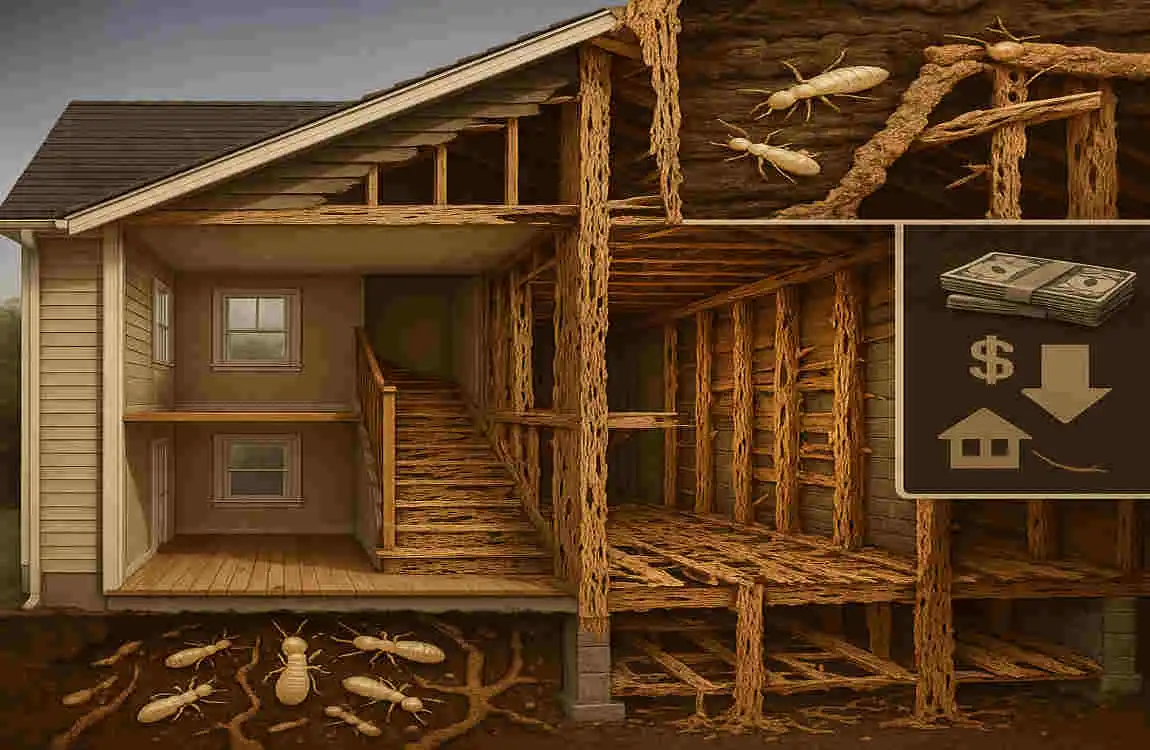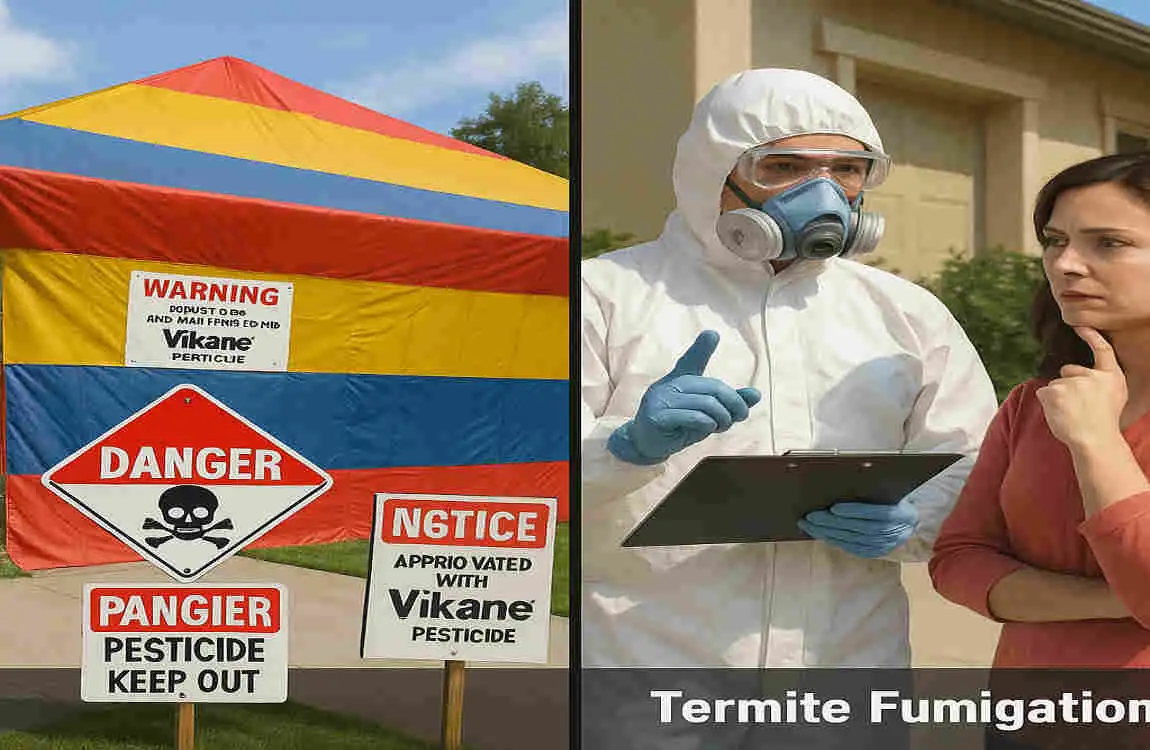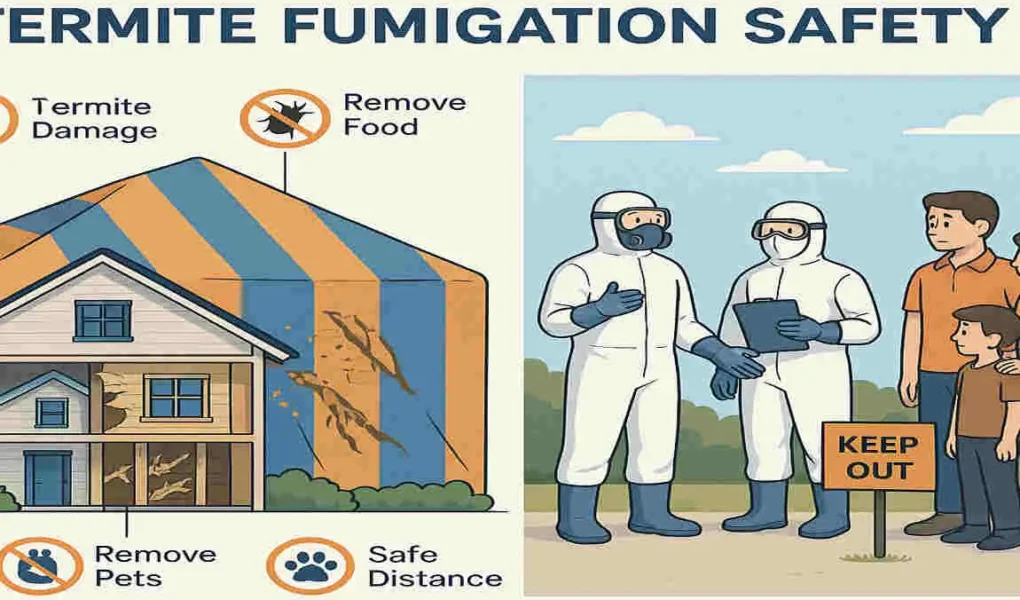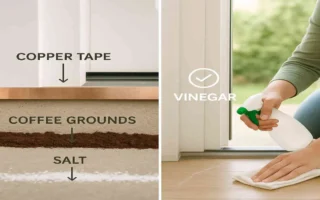Picture this: you’re a proud homeowner, but suddenly you notice small, winged insects swarming around your windows or baseboards. A sinking feeling sets in as you realize these might be termites – every homeowner’s worst nightmare. Termites can cause extensive damage to your home’s structure, leading to costly repairs if left untreated. As you frantically search for solutions, you may come across various termite treatment methods, including termite baiting and termite fumigation. But hold on, can you really bomb your house clean for termites?
Understanding Termites and the Threat They Pose
Before we dive into the specifics of termite bombing, let’s take a closer look at these pesky critters. Termites are small, pale-colored insects that feed on wood and other cellulose-based materials. The most common types found in residential areas are subterranean termites, drywood termites, and dampwood termites. These tiny insects can cause significant damage to your home’s structure by eating away at wooden beams, floors, and walls, often going unnoticed until the damage becomes severe.
The financial costs associated with termite damage can be staggering. In the United States alone, termites cause an estimated $5 billion in property damage annually. Prompt termite treatment is crucial to prevent extensive damage and costly repairs. Homeowners have various termite control methods to choose from, including fumigation, baiting, spraying, and more. But is bombing your house for termites the best solution?
What Is Termite Bombing?

Termite bombing, also known as fumigation, is a method of pest control that involves releasing a fog or mist of insecticide into an enclosed space to kill termites. The active ingredients in termite bombs are typically pyrethroids, which are synthetic chemical compounds that disrupt the nervous system of insects, leading to paralysis and death.
Homeowners usually use termite bombs by placing the foggers in strategic locations throughout the house, sealing off the treated area, and activating the bombs. The insecticide fog then permeates the space, settling on surfaces and penetrating cracks and crevices where termites may hide.
It is essential to recognize the distinction between professional fumigation and DIY termite bombs. Professional fumigation involves tenting the entire house and using a more potent gas, such as sulfuryl fluoride, to eliminate termites. DIY termite bombs, on the other hand, are consumer-grade products that are less powerful and typically used for more minor infestations.
Can You Bomb Your House for Termites? — Evaluating the Safety
While termite bombing may seem like a convenient solution, significant safety concerns must be considered. The chemicals used in termite bombs are toxic not only to termites but also to humans and pets. Inhaling or coming into contact with these substances can cause respiratory issues, skin irritation, and other health problems.
Proper preparation is crucial before bombing a house for termites. This includes removing all food, dishes, and utensils from the treated area, covering furniture and electronics, and finding a safe place for family members and pets to stay during the treatment. Adequate ventilation is also essential, and it’s important to follow the manufacturer’s instructions regarding re-entry timing. In most cases, it is recommended to wait at least 2-4 hours after the treatment before re-entering the home.
The environmental impact of termite bombs should also be considered. The chemicals used can be harmful to beneficial insects, such as bees and butterflies, and may contaminate soil and water sources if not used properly.
When comparing professional fumigation to consumer termite bombs, it’s clear that professional treatments are generally safer. Trained technicians follow strict safety protocols and utilize specialized equipment to contain the fumigant gas, thereby minimizing risks to human health and the environment.
Effectiveness of Bombing Your House for Termites
While termite bombs may seem like a quick fix, their effectiveness in entirely eradicating termite colonies is questionable. Termite bombs work by releasing a fog or mist of insecticide into the air, which then settles on surfaces and penetrates cracks and crevices. However, this method may not reach all areas where termites hide, particularly in the case of subterranean or deep infestations.
Research and case studies have shown that termite bombs alone often have limited success rates in eliminating termite colonies. One reason for this is that the insecticide may not penetrate deep enough into wood or soil to reach all the termites. Additionally, if the colony’s queen and reproductive members are not eliminated, the infestation can quickly rebound.
For effective termite control, an integrated approach that combines multiple treatment methods is often necessary. This may include a combination of baiting systems, liquid termiticides, and physical barriers, depending on the type and severity of the infestation.
Alternatives to Bombing for Termite Control

If you’re considering bombing your house for termites, it’s essential to weigh the alternatives available. Here are some effective termite control options to consider:
- Professional Termite Fumigation: This involves tenting the entire house and using a potent gas, such as sulfuryl fluoride, to eliminate termites. While more expensive than DIY methods, professional fumigation is highly effective and offers a more comprehensive treatment.
- Termite Baiting Systems: Baiting involves placing stations containing a slow-acting insecticide around the perimeter of your home. Termites consume the bait and share it with the rest of the colony, gradually eliminating the infestation over time. Baiting systems are less invasive and can provide ongoing protection.
- Liquid Termiticides and Barrier Treatments: Liquid termiticides are applied to the soil around your home’s foundation, creating a protective barrier that prevents termites from entering. This method is effective for subterranean termites and can provide long-lasting protection.
- Physical Barriers and Wood Treatments: Installing physical barriers, such as steel mesh or sand barriers, can prevent termites from accessing your home’s structure. Treating wood with borate-based compounds can also make it less attractive to termites.
- Natural and Non-Chemical Options: Some homeowners prefer to use natural or non-chemical methods for termite control. These may include using nematodes (beneficial worms) that feed on termites, diatomaceous earth, or essential oils like orange oil or neem oil.
In addition to these treatment options, preventive measures are crucial for long-term termite control. This includes regular home inspections, moisture control, proper wood maintenance, and sealing potential entry points.
What Homeowners Should Do If They Suspect Termites
If you suspect a termite infestation in your daliy home clean, it’s essential to act quickly. Some signs to look out for include:
- Mud tubes on exterior walls or foundation
- Damaged or hollow-sounding wood
- Discarded wings near windows or doors (indicating swarming termites)
- Cracked or bubbling paint
- Tight-fitting doors or windows
If you notice any of these signs, the first step is to schedule a professional inspection. A trained termite control expert can accurately diagnose the type and extent of the infestation and recommend the most appropriate treatment plan.
When deciding on a treatment method, consider factors such as the severity of the infestation, the type of termite, and your budget. While termite bombing may be tempting as a DIY solution, it’s generally safer and more effective to opt for professional treatments or integrated pest management approaches.




